The Department for Education has today published a hefty 146-page research report into the attainment of disadvantaged pupils.
The National Foundation for Educational Research (NFER) was asked to investigate the difference between some schools in the performance of pupils from disadvantaged backgrounds – those eligible for pupil premium.
Here’s what they found:
1. Schools have tried out an average of 18 strategies to boost the learning of pupil premium students
The survey found schools had used a large number of strategies to raise the attainment of disadvantaged pupils since 2011.
The most popular and effective strategies focused on teaching and learning, especially; paired or small group additional teaching; improving feedback; and one-to-one tuition.
2. Differences between school characteristiscs – bad news if you’re disadvantaged and in a rural secondary school with large year groups
– Schools with higher levels of pupil absence had lower performance among disadvantaged pupils
– Schools with larger year groups overall also had lower performance
– And so did rural secondary schools
3. Differences between school type – being a member of a Teaching School Alliance makes no difference
– There were mixed findings for sponsored academies, which had poorer performance at primary level, but better performance and improvement at secondary level
– Selective schools and teaching schools were associated with higher performance (after taking into account the influence of high-performing intake)
– And the study found no evidence of a statistically significant relationship between positive performance among disadvantaged pupils and being member of a Teaching School Alliance
4. The 15 most popular pupil premium strategies used by schools
5. The most popular are also pretty much the same as those deemed the most effective
6. Teachers thought the best ideas actually came from within their own schools
7. Nearly one in four schools said a major influence on their decision of how to boost attainment was whether parents liked it
8. Children’s minister Sam Gyimah has some tips on how to be a successful pupil premium school
“Successful schools adopt a whole school approach to their use of the pupil premium that delivers on the full potential of every pupil, including nurturing their more able pupils to excel.
“Successful schools deploy the best staff to support their most disadvantaged pupils, and use their resources to develop the skills and roles of their teachers and teaching assistants.”
9. In conclusion, evidence-based strategies tailored to specific schools are the best
Overall, this research suggests there is no single, “one size fits all” solution to closing the attainment gap. Instead, a number of measures are required, tailored to each school’s circumstances and stage on an improvement journey.
These measures include setting a culture of high expectations for all pupils, understanding how schools can make a difference, selecting a range of evidence-based strategies tailored to meet the needs of individual schools and pupils, and implementing them well.
10. Here’s a handy building block chart of the most effective ways to support disadvantaged pupils

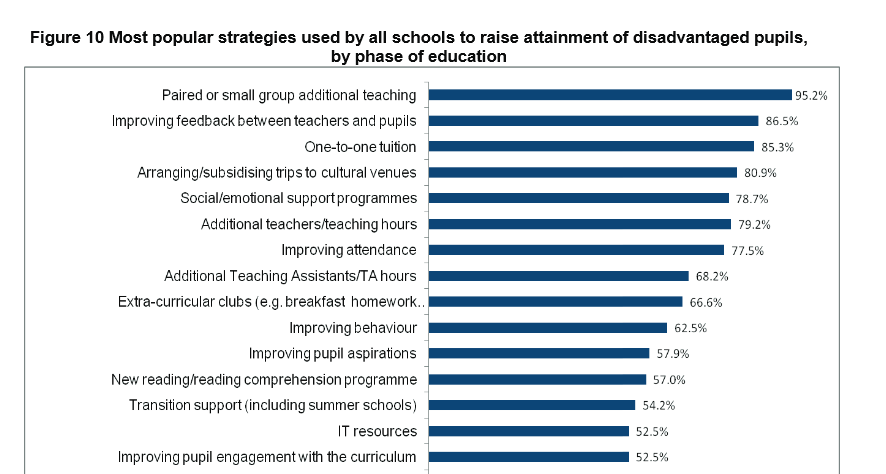
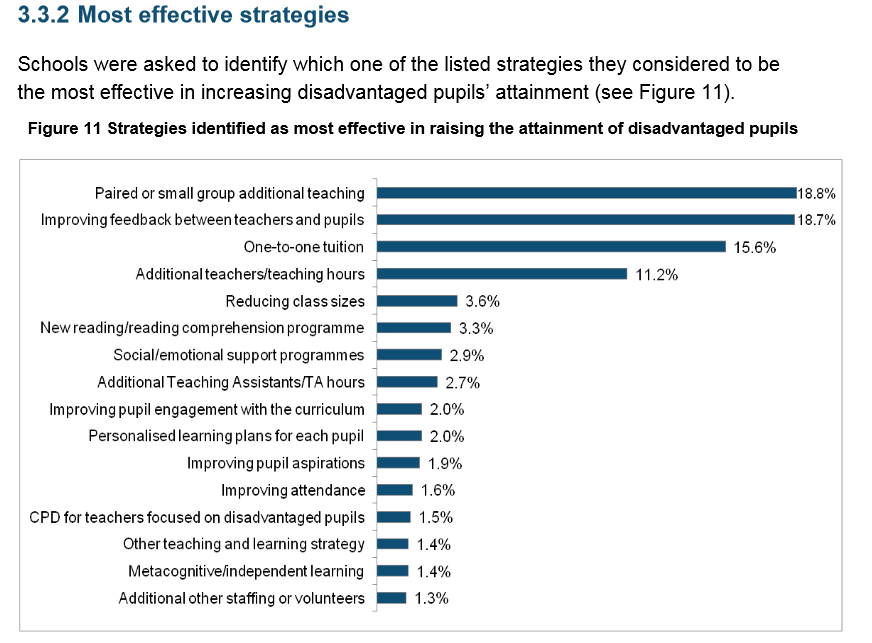
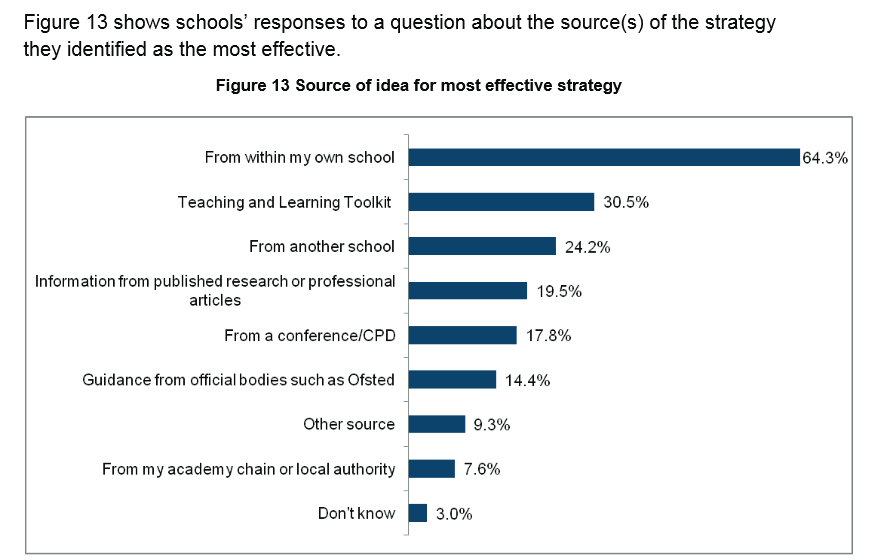
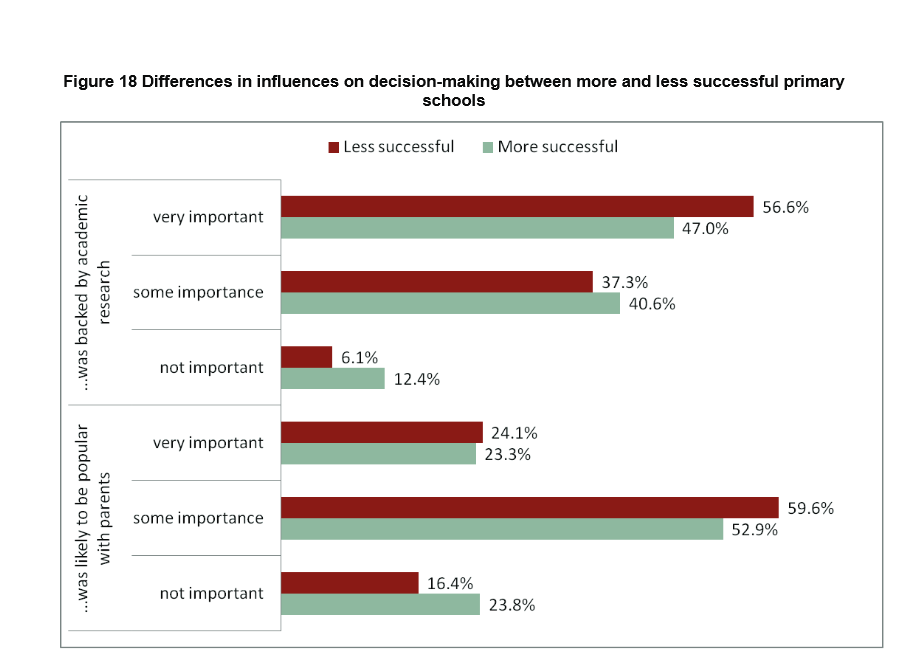
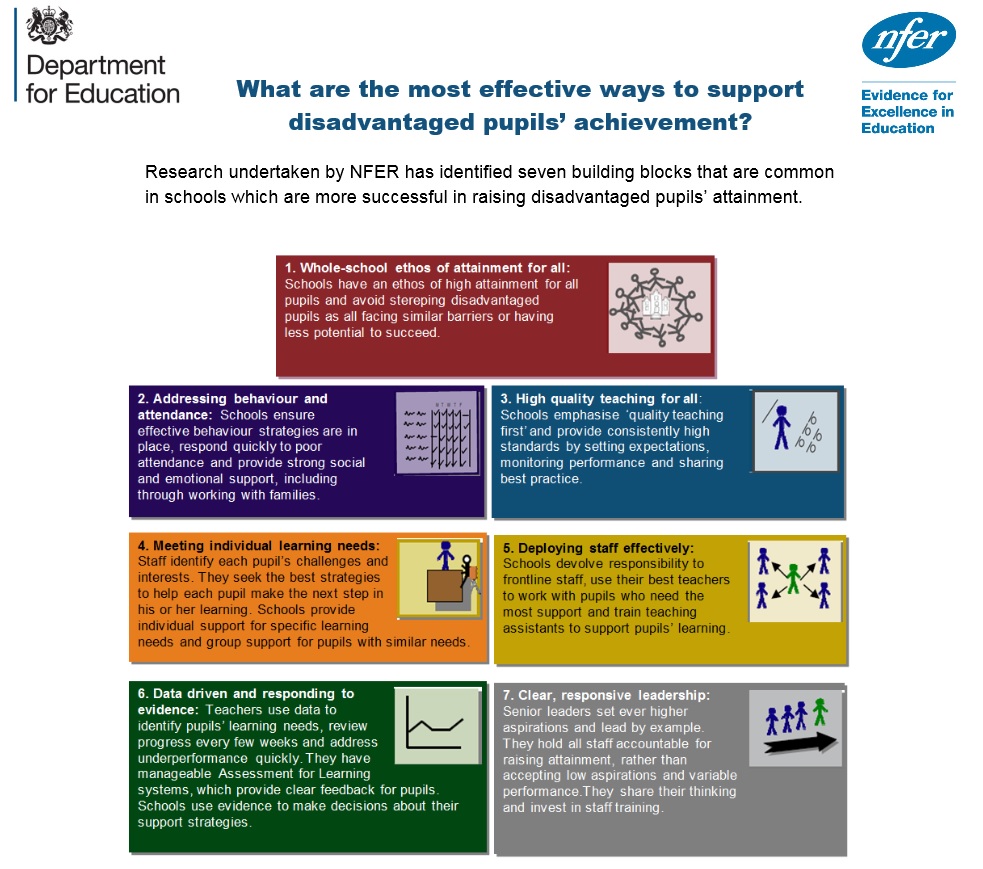

Really useful article evaluating impact honestly , which is what staff need rather than experimenting from their own environmental bias. The final toolkit is particularly useful and I am energised to develop this personally to the needs, interests and skills of both students and staff.
Thanks for helping me get of the blocks , rather than review a blind race which could have been ineffective for my prospective working cohort.